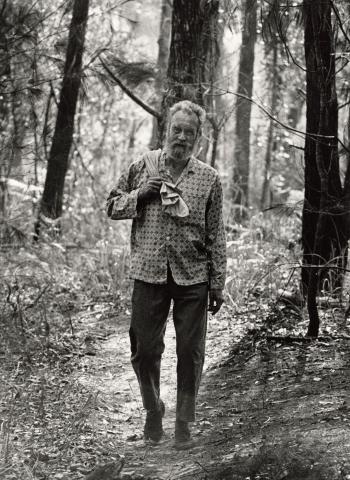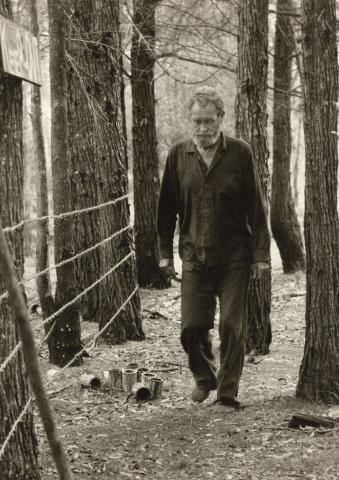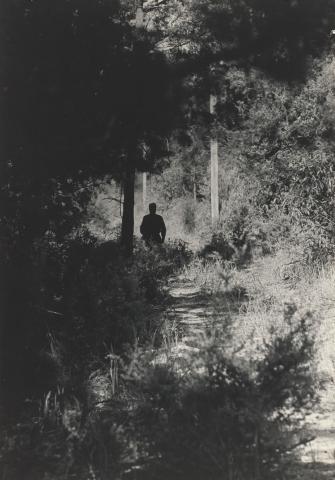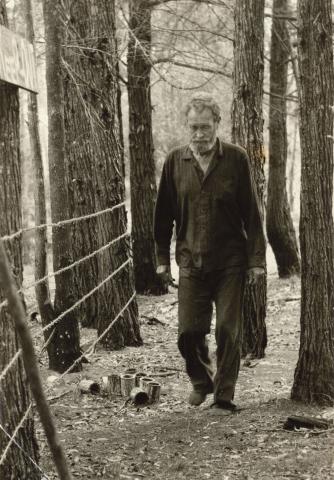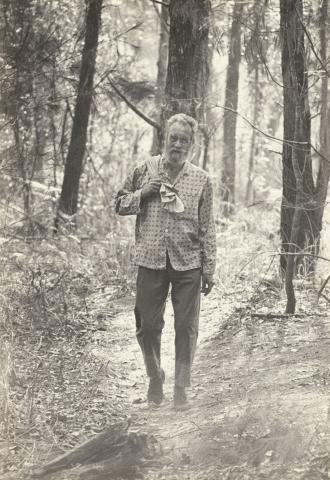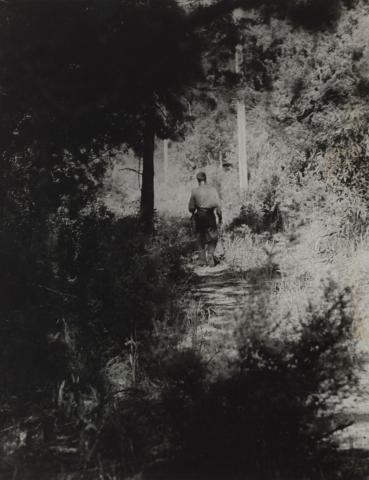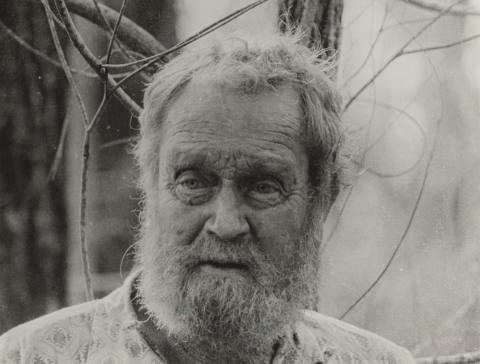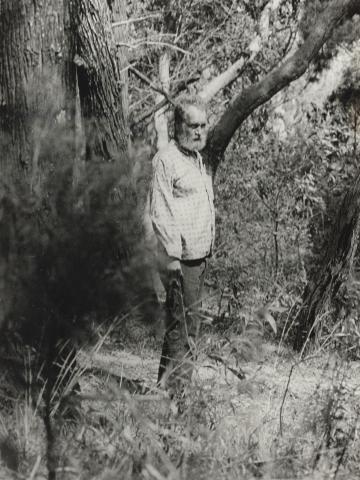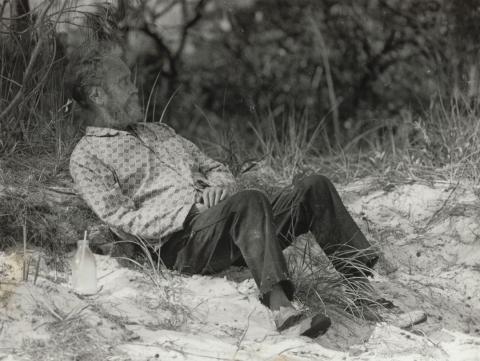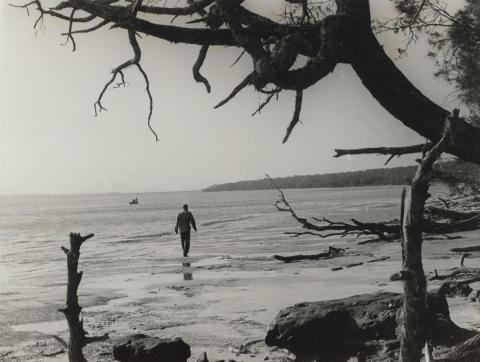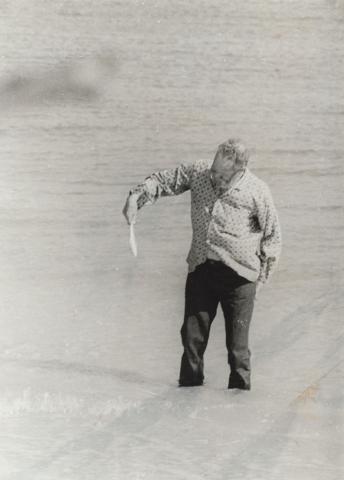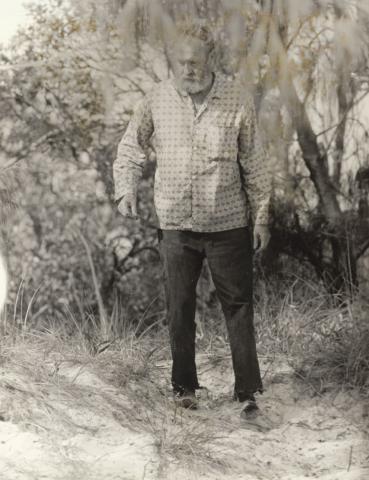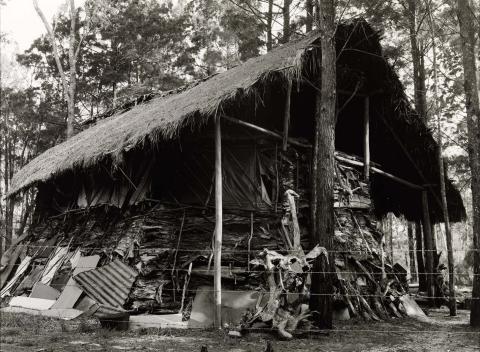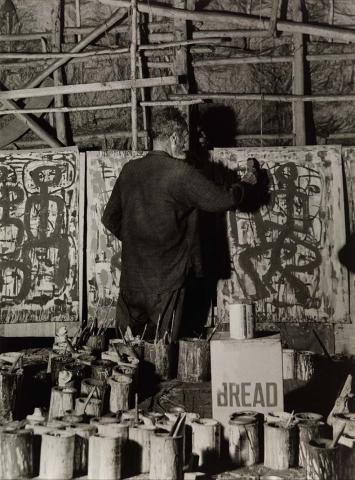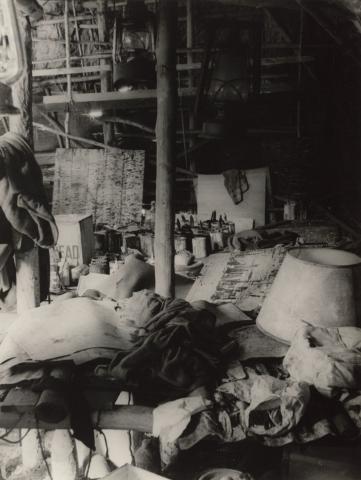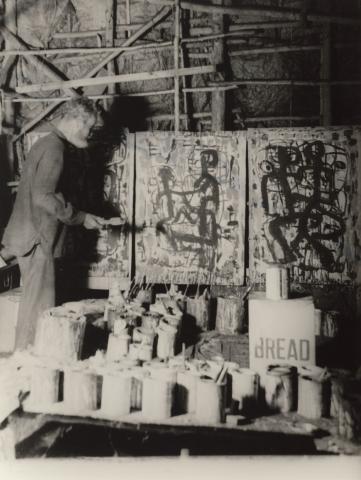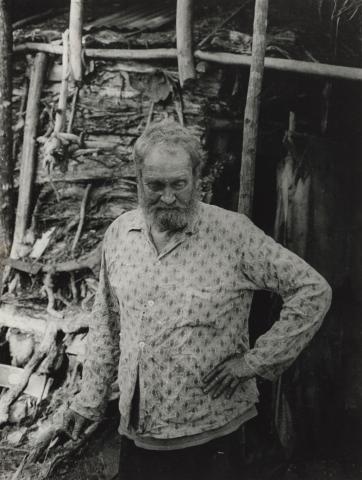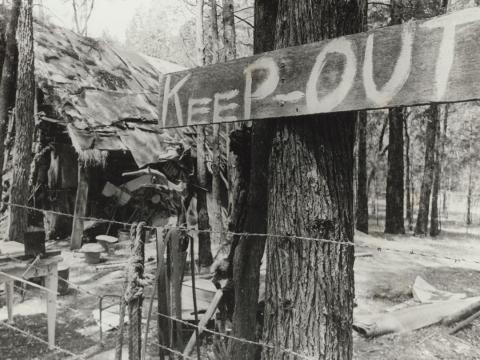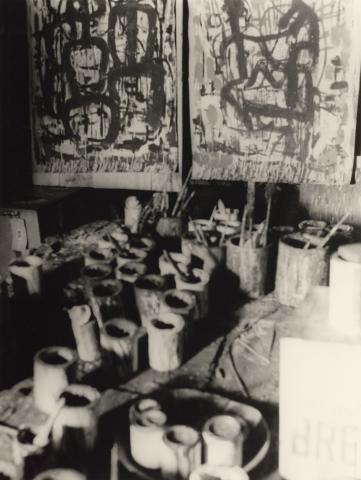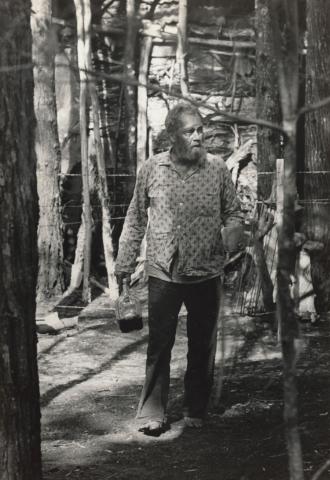An enlarged view: Robert Walker's photographs of Ian Fairweather
By Michael Hawker
Artlines | 2-2022 | June 2022
Editor: Stephanie Kennard
A gift of 33 vintage prints from the family of well-known Australian photographer Robert Walker (1922–2007) builds on the Gallery’s extensive holdings of material on reclusive artist Ian Fairweather, and highlights his life on Bribie Island, writes Michael Hawker.
In his foreword to Robert Walker’s book Painters in the Australian Landscape (1988), David Malouf wrote that Walker is an ‘artist of a high order’, who
understands that whatever the relationship may be between that moment of solitary creation and life in the everyday sociable world, the artist’s working life goes on at every moment and that too goes into the making.
Malouf continued that Walker captures an ‘enlarged view of the artist’s world [that] does somehow illuminate the paintings when we go back to them’.1 This is certainly the case with Ian Fairweather, whom Walker photographed at his Bribie Island home on a number of occasions in the late 1960s. In these images, Walker encapsulates Fairweather’s existence on the island and his singular and ascetic devotion to his painting.
In 1952, Walker began working in the advertising department at Esso in Sydney, where he received advice from the company’s photographer at the time, Max Dupain. Dupain was held to be one of the country’s finest photographers and he encouraged Walker to experiment with the office Rolleiflex 2.8 model camera at home on weekends. Dupain had been introduced to ideas of the documentary movement in photography and film by his friend Damien Parer, a war photographer and filmmaker who shot Kokoda Front Line! 1942 — the film that earned Australia its first Academy Award. The movement was concerned with factual, informative yet penetrating observation of the real world. Dupain was part of the ‘Six Photographers’ group, which valued a direct treatment of the world with a personal interpretation, in contrast to the prevalence of slick advertising and fashion photography of the time. In 1955, six Australian photographers — Gordon Andrews, Dupain, Kerry Dundas, Hal Missingham, Axel Poignant and David Potts — presented an exhibition in Sydney that represented a shift from the traditions of the past to the recording of contemporary life.
Following this strong example, Walker cultivated this thoughtful documentary approach in his photography. His techniques and attitude to his subjects was unpretentious, consisting of strong composition, and a capacity not to manipulate the individual with preconceived ideas. When viewing his portrait photographs, there is evidence in each image of genuineness of the scene and humanity of the subject.
Walker first travelled to Bribie Island, off the coast of south-east Queensland, with the intention of photographing the artist Ian Fairweather in 1966, later making subsequent visits after he had gotten to know the artist. Walker described in an interview in 2006 that ‘he was good and we got on well’.2 The result of this association is an expansive record of Fairweather and his life on the island.
Walker passed away in Surry Hills in 2007. Among Saskia Havekes and Louise Havekes-Walker’s generous gifts to the Gallery include the photographer’s ‘Beach’, ‘Hut’ and ‘Track’ series of photographs, which were exhibited alongside Fairweather’s work at Lismore Regional Art Gallery in 2005–06 for ‘Ian Fairweather: An Artist of the 21st Century’. Walker’s photographs have often been reproduced in catalogues accompanying exhibitions of Fairweather’s painting — such is Walker’s ability to reveal aspects of Fairweather’s character and his ease in the natural world, where even his rudimentary hut seams part of the environment.
Michael Hawker is former Curator, Australian Art to 1980, QAGOMA.
Endnotes
- David Malouf, quoted in Robert Walker, Painters in the Australian Landscape, Hale & Iremonger, Marrickville, NSW, 1988, p.1.
- Steven Alderton, interview with Robert Walker, Ian Fairweather: An Artist of the 21st Century [exhibition catalogue], Lismore Regional Gallery, NSW, 2006, p.29.
Connected objects
Related artists
WALKER, Robert
1922
- 2007
Full profile
for WALKER, Robert
FAIRWEATHER, Ian
1891
- 1974
Full profile
for FAIRWEATHER, Ian
